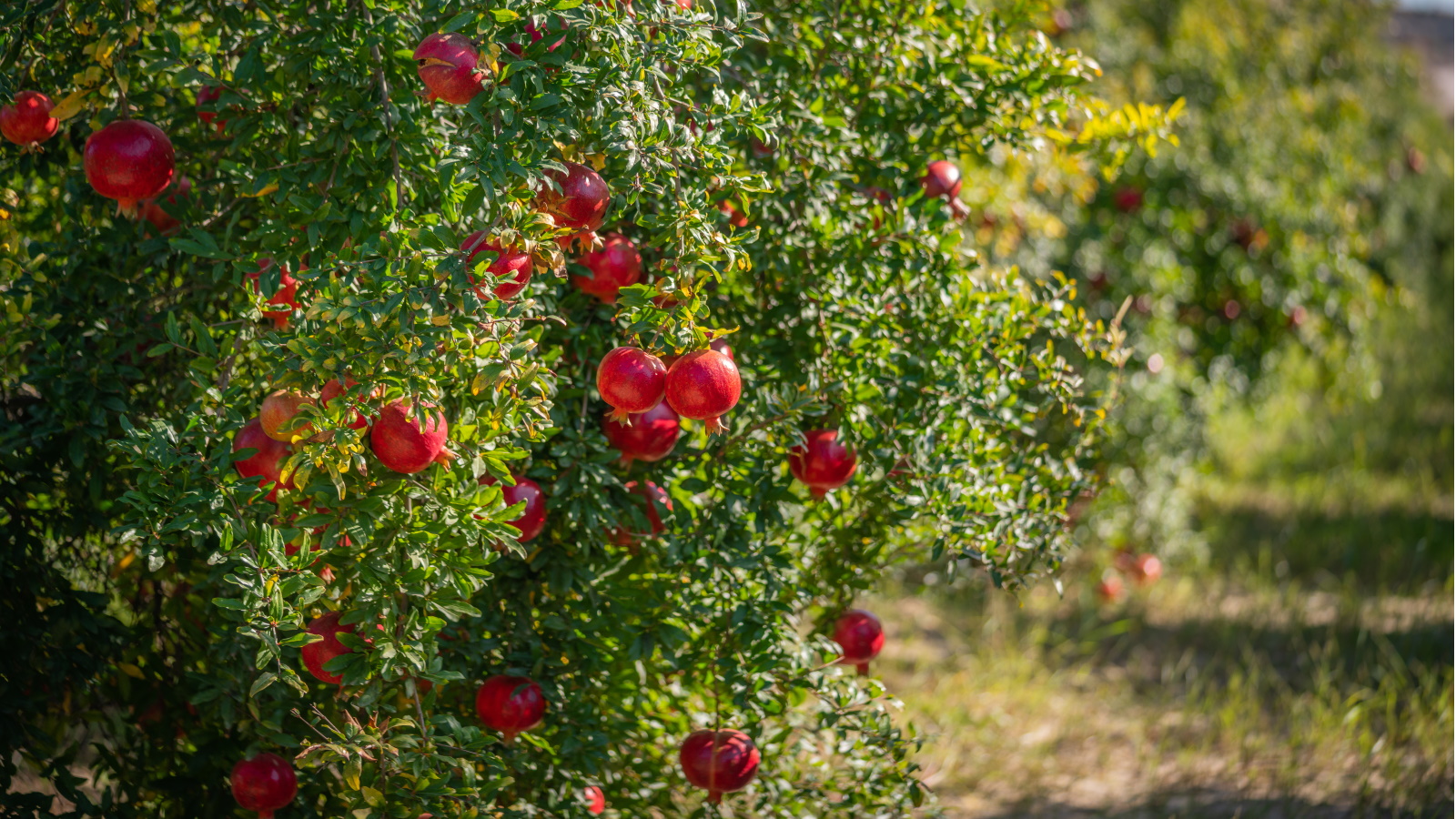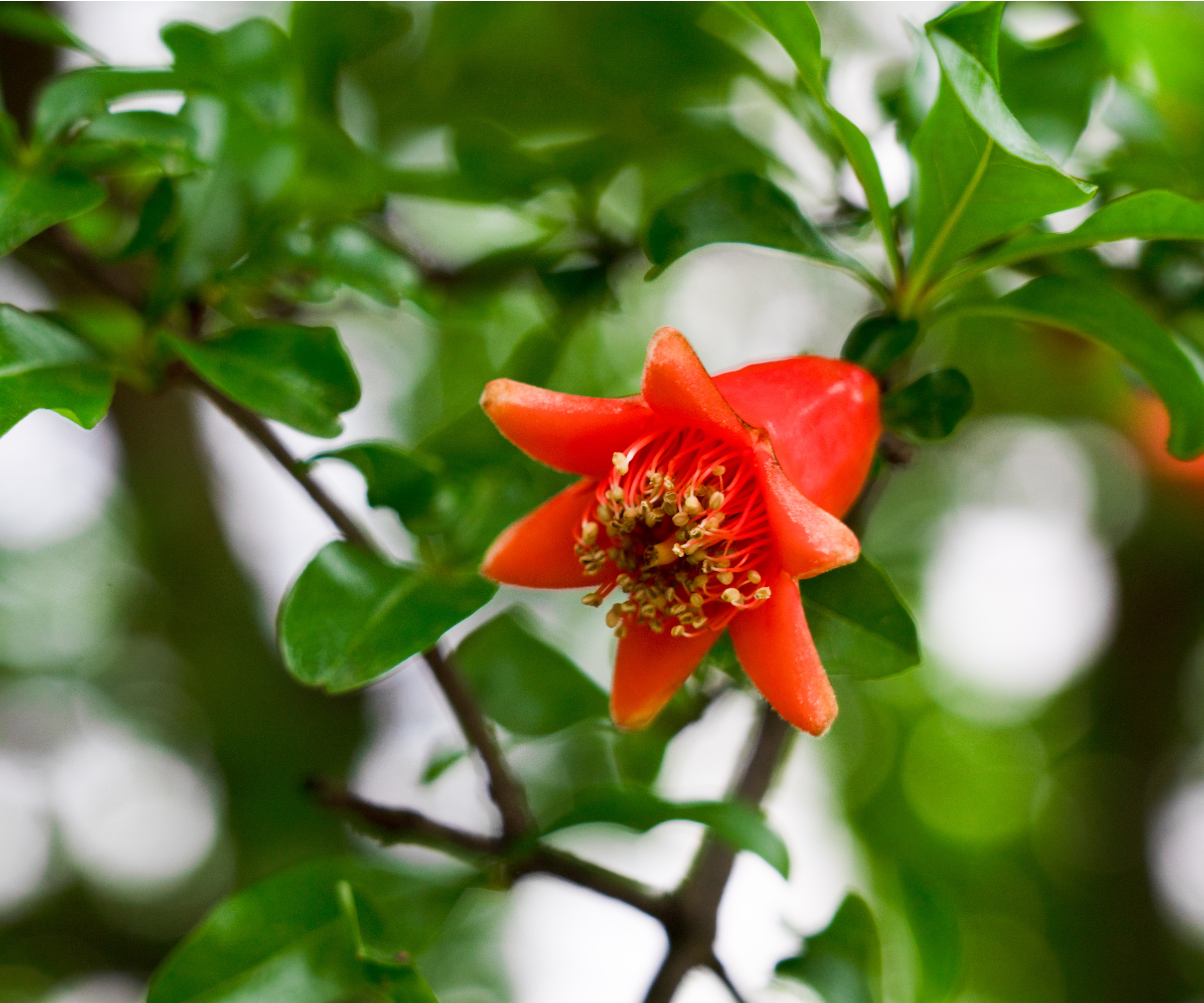
Growing your own fruit is both rewarding and challenging. There's an art to getting the growing environment right for your fruit trees so they can produce plenty of juicy fruit. Pomegranate trees are no different, needing pollination for successful fruit production.
Pollination refers to pollen being transferred from the male part of a flower to the female part. Even the easiest fruit trees to grow need this process to produce their delicious fruit. While many trees are assisted by pollinators like bees and butterflies, some trees are self-pollinating - this includes pomegranate trees.
But, what exactly does this mean? And what do you need to understand about self-pollination when growing pomegranates? Here, experts share all.
Are pomegranate trees self-pollinating?
A self-pollinating tree, or self-fertile tree, is one that doesn't rely on neighboring trees and pollinators. Rather, it pollinates itself. Pomegranate trees are one of the trees able to produce fruit on their own. Wondering how this works? Find out from experts below.
How are pomegranate trees self-pollinating?

'Pomegranate trees are considered a self-pollinating species of fruit trees since they do not require a second, nearby tree to pollinate,' says David Burrows, plant pollination expert at Arkearth.
In spring and summer, pomegranate trees flower with showy orange and red blooms. This is where self-pollination takes place for later fruit production.
'The same flower holds all the elements to be pollinated as long as pollen transfers from the stamen (male) and stigma (female),' David explains.
While some self-pollinating trees, including growing peach trees, are assisted by the wind to transfer pollen from male to female flowers, pomegranates don't rely on this as much.
'Because of the tulip-shape of the flower, the wind is less of an influence on their pollination,' says David. 'This is because the flower's pollen source is recessed inside the flower,' he adds.
As a result, when planting pomegranate seeds, you'll only need to grow one pomegranate tree for fruit.
'However, if you want to supercharge fruit production, having two trees can help,' notes Valeria Nyman, gardening expert from gardening app Taim.io. 'Cross-pollination between trees often improves the size and quantity of the fruit,' she explains.
Having a second tree provides more plants for pollinators and increases the amount of pollination and cross-pollination happening. Enabling cross-pollination is also a great way to boost biodiversity in your yard.
'There are several other things you can do to attract more pollinators, including planting other flowering plants, herbs and wildflowers to create an oasis of food sources,' says David. Try planting these wildflower seeds from Amazon.
FAQs
How do you hand-pollinate pomegranate trees?
Although pomegranate trees are self-pollinating, you might choose to hand-pollinate this plant to help increase yields. 'A soft brush or cotton swab can mimic what bees do, transferring pollen from one flower to another,' explains Valeria Nyman, gardening expert from gardening app Taim.io. This set of paintbrushes from Walmart work well for this.
Now you know the answer to 'are pomegranate trees self-pollinating?', make sure to also keep on top of pomegranate tree care for successful fruit production. When stressed, pomegranate trees are less likely to self-pollinate well and may struggle to produce fruit. Among other things, you should protecting these plants from frost (and other extreme weather) to prevent them becoming stressed.







